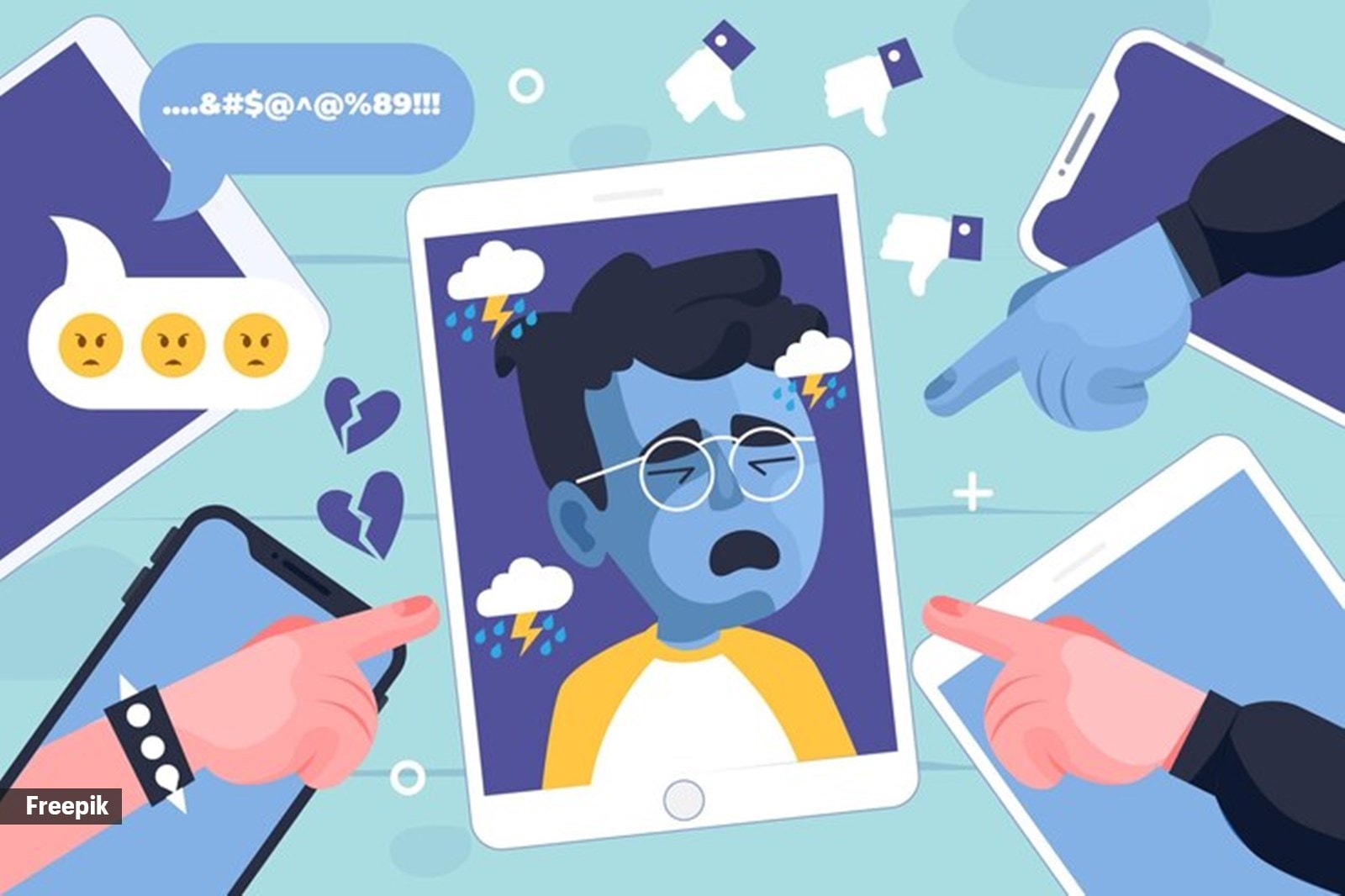Cyberbullying: What parents can do to help
In a recent global survey by McAfee, 45% of the participating children in India said they were cyberbullied by a stranger, compared to the global average of 17%. Here's what parents can do to protect their children from getting cyberbullied
 Cyberbullying among children can be deeply personal, associated with shame and the child may not want to open up to parents about it or be able to process it. (Source: Freepik)
Cyberbullying among children can be deeply personal, associated with shame and the child may not want to open up to parents about it or be able to process it. (Source: Freepik) Written by Prakriti Poddar
In February 2023, a 14-year-old girl from Bayville, New Jersey, US, died by suicide after she was cyberbullied around a video that showed her being attacked in her school. In 2020, a 17-year-old boy in Gurugram died by suicide after he was mercilessly trolled and harassed online for a crime he didn’t commit.
The proliferation of internet and social media has been a double-edged sword for children. While on one hand it has democratized learning for millions, on the other it has exposed children to harmful and toxic behaviours such as cyberbullying.
In a recent global survey by McAfee, 45% of the participating children in India said they were cyberbullied by a stranger, compared to the global average of 17%. The statistics are just as worrisome for the US where the Centres for Disease Control and Prevention data shows 14.9% of all adolescents have been cyberbullied and 13.6% have attempted suicide.
American Psychological Association defines bullying as “a form of aggressive behaviour in which someone intentionally and repeatedly causes another person injury or discomfort. Bullying can take the form of physical contact, words, or more subtle actions.”
This behaviour stems from a need to exert power. People who bully, often feel helpless or out of control in their personal lives and take out their frustration in a violent manner in the absence of healthy coping mechanisms. Witnessing violence at home can also lead to bullying.
When bullying moves online, it is referred to as cyberbullying. The McAfee survey defines cyberbullying as bullying that takes place over digital devices like cell phones, computers, and tablets. It can occur through SMS, text, and apps, or online in social media, forums, or gaming. Cyberbullying includes sending, posting, or sharing negative, harmful, false, or mean content about someone else and sharing personal or private information about someone else causing embarrassment or humiliation.
Cyberbullying among children can be deeply personal, associated with shame and the child may not want to open up to parents about it or be able to process it. Therefore, it is up to the parents to be proactive in sensitising children about cyberbullying, protect them from it and be alert and on the lookout for any signs of distress among children that could be traced back to events of cyberbullying.
Here’s what parents can do to protect their children from getting cyberbullied:
 When bullying moves online, it is referred to as cyberbullying. (Source: Freepik)
When bullying moves online, it is referred to as cyberbullying. (Source: Freepik)
Set healthy tech boundaries: This is important for parents to moderate what their child consumes and how much they consume as per their age. For example, pre-schoolers should use the internet for less than an hour each day, children between ages 6-10 can spend 1-2 hours a day, pre-teens that is children between ages 11-13 should be online for no more than 2-3 hours a day and teens for 2-4 hours a day. The time spent online by children should be balanced by the time spent playing or moving around and doing physical activity outdoors for their complete development. Empower your child to navigate the digital world wisely and shape their digital journey for success.
Educate them of cyberbullying: Make them aware of cyberbullying, privacy, and other online risks through your personal struggles or through stories in the public domain. Use these conversations to talk of what is okay and what is not online and what your child should do if they feel threatened or unsafe.
Create awareness around mental illness: Children struggling with mental health issues such as anxiety and depression often become targets for bullies. By talking of mental illness at home and sharing information about it you can destigmatize mental illness so that your child doesn’t feel in any way ‘weaker’ because of it. At the same time, seek professional help for your child. Positive attitudes and behaviours at home can contribute to the child’s confidence and build resilience.
Encourage your child to communicate: Maintain an open channel of communication with your child. Encourage conversations around relationships at school and online activities. If the child suggests or insists on a potentially risky online activity or behaviour, talk to them, and explain why it is not safe.
Look for warning signs: An uptick in online activities or time spent on devices is a reason for you to check in with your child. If your child is acting withdrawn, isolated, and avoiding social situations it could indicate a case cyber bullying. If you sense something is wrong, talk to them and inform them that you will have to check their online activity because it is necessary and for their safety.
In case your child confides in you and says that they are getting cyberbullied, express your support and unconditional love for them and thank them for sharing this with you. If your child is older, you can together discuss the next course of action. It is important that parents react calmly and show their support and willingness to help. They need to acknowledge the pain and hurt caused by cyberbullying and strive to create a safe space to initiate their child’s healing process.
Internet can at times be unsafe and intimidating for children but that shouldn’t be a reason to throw the baby with the bathwater. Parents need to inculcate healthy and responsible behaviours around technology-use in children. So that they learn to harness the power of technology, benefitting from its goodness and usefulness without letting it take over their lives and wellbeing.
(Prakriti Poddar is a mental health advocate and wellbeing expert. She is the global head, Mental Health & Wellbeing, RoundGlass Living app)



- 01
- 02
- 03
- 04
- 05




























